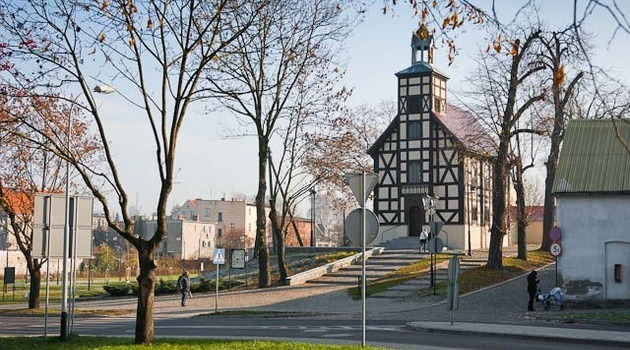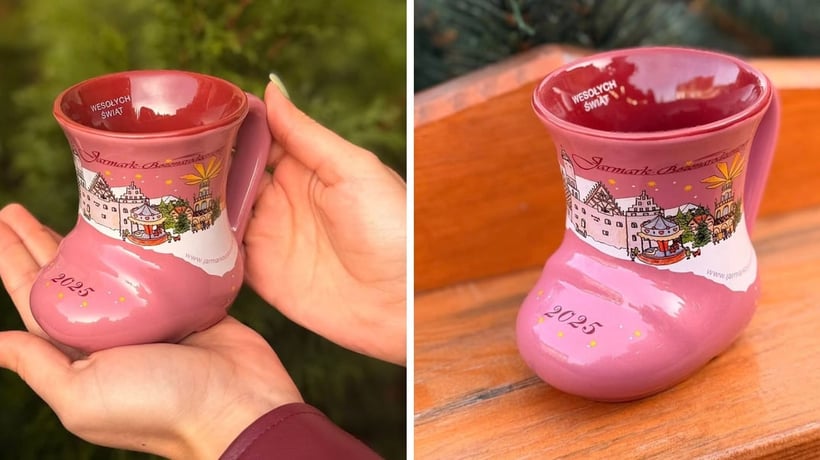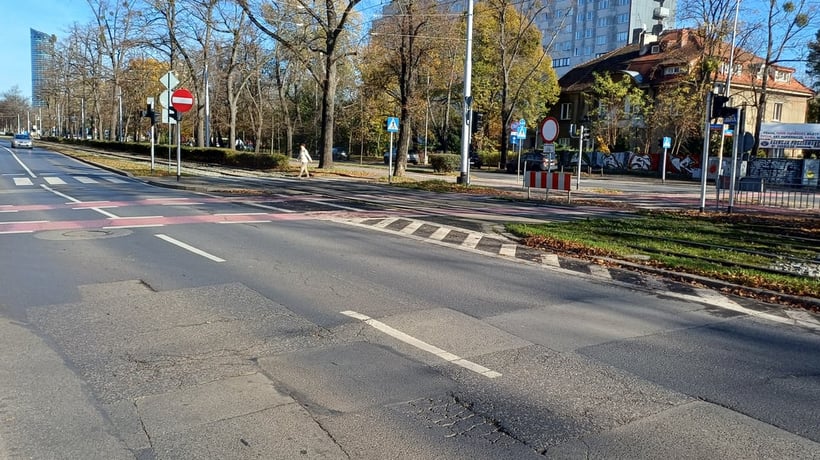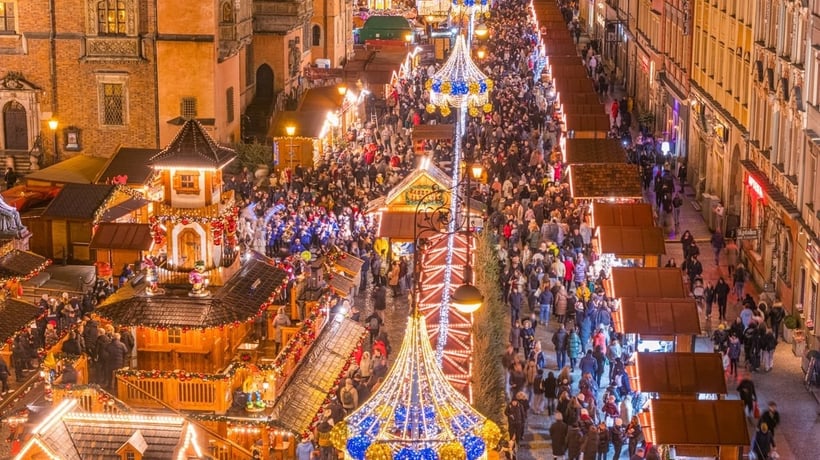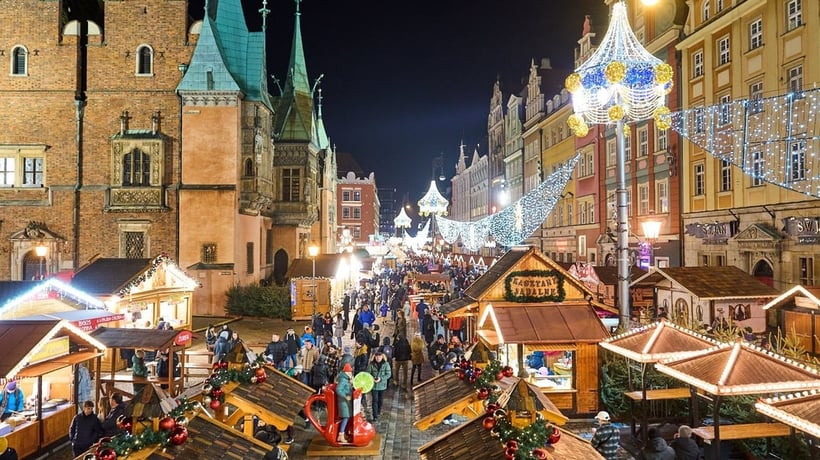In the spring and the summer, the best way to visit Twardogóra (located some 50 km away from Wroclaw) and its surroundings is by bike. You can use a bike to get to practically every part of the municipality. Tourists can also cross it on foot, once they arrive there by train or by car, although it must be said that drivers are not happy to drive on the local roads.
Twardogóra's origins date back to the rule of the first Piasts when, as a market settlement, it was located on a commerce route between Wroclaw and Poznań. The name of the settlement (it was granted urban rights in 1293 by duke Henryk III Głogowski) was, according to a legend, the result of the Tatar invasion of Silesia in 1241: the local forces organized "hard resistance" against them. Initially named Twarda Góra (or Festenberg during the Prussian rule), the town became Twardogóra on 12 November 1946.

Town square in Twardogóra
Since nearly every locality in the Twardogóra municipality (whose population, as of the end of last year, was 12,914 people) is located among forests, one should not be surprised at "forest" names that can be found there, such as Dąbrowa, Bukowinka, Grabowno. The municipality is a part of the Oleśnica district and is located on the Twardogórskie Hills which constitute a part of the Trzebnickie Hills rich in valleys formed by streams, residual borders, hills and lowlands. This diversified landscape can be found, among others, between Gola Wielka and Chełstowo.
On foot and by bike
- this is how you can travel in the vicinity of Twardogóra on special routes. The best pedestrian route is the blue route (Grabowno Wielkie, train station) - Grabowno Małe - Leśne Domy - Twardogóra - Wesółka - Goszcz - Domasławice - Poręby - Możdżanów - Milicz) and the yellow route (Twardogóra train station - Sądrożyce - Chełstów - Most Piecha - Moszyce - Twardogóra train station).
A bike is the recommended means of transport on the red route (Twardogóra, train station - Trzy Chałupy - Olszówka - Kuźnia Goszczańska - Nowa Wieś Goszczańska - Świniary - Drągów - Goszcz - Troska - Gola Wielka - Chełstów - Drogoszowice - Kolonia Sosnówka - Sosnówka - Sądrożyce - Twardogóra), the green route (Twardogóra - Moszyce - Gola Wielka - Goszcz - Szczodrak - Wesółka - Twardogóra), and the blue route (Korona Kocich Gór - the section running in the Twardogóra municipality) and the Stork Nest route (no signs). The exact description of the routes and their maps can be found here.
For example, the red route, which forms a loop around Twardogóra , runs mostly on forest and field roads and partly on very wavy terrain of the Twardogórskie Hills, while the green route runs across places that are the most interesting to tourists.

Footpath near Skorynia
Interesting stops
What are the greatest tourist attractions in the Twardogóra municipality? In Twardogóra one must see: the town square with its asymmetrically located town hall and 18th and 19th century buildings, revitalized in 2008; the baroque palace, once the home of the owners of land in Twardogóra and Goszcz, built on the foundations of a defensive fort dating back to the 15th century. The palace is surrounded by a park, with a historical entry gate and along its footpath one can see the statue of Hercules, the smaller basilica, or the Our Lady Help of Christians church erected in the years 1874-1876 from raw brick on an existing old foundation, and the Holy Trinity Church built from red brick timberframe building, renovated a few years ago and now a venue for small cultural events (also, it is the "winner" of the contest organized by the Ministry of Culture and National Heritage for an "Attended Historical Building").

Baroque palace in Twardogóra
In Goszcz, one must visit the palaceandpark complex, or rather its ruins, which constitute a historical object of group I. The first palace was built in the years 1730-1740 in the place of a 12th century castle, but it was destroyed in a fire. In the years 1749-1755, a new palace was built which, until January 1945, was owned by the Reichenbach family. Later, it was occupied by the Soviet army and handed over to the local administration. On the Christmas Eve of 1947, it burned down.
Of great charm is the small wooden St. Gilles church in Chełstowo, erected after 1666 in the place of an older 16th century church, covered with a shingle roof and containing valuable polychromed sculptures dating back to about 1400.

Ruins of the palace in Goszcz
In Grabowno Małe there is the Exaltation of the Holy Cross church, one of the few wooden church in Lower Silesia of Gothic characteristics, built in 1655, with a 19th century Renaissance interior and, among others, the Neo-Gothic wooden main altar.
A full description of the interesting buildings in the Twardogóra municipality can be found here.
Notable attractions of the municipality include a rich collection of pieces of the Berlin Wall, collected in Sosnówka by Ludwik Wasecki, a physician and art collector.

Berlin Wall in Sosnówkasource: Wratislaviae Amici dolny-slask.org.pl
Nature, sport, and entertainment
The northern part of the Twardogóra municipality cuts into the "Barycz Valley" Landscape Part; also, in the municipality there are the Torfowisko natural preserve near Grabowno Wielkie, the natural preserve in the vicinity of Gola Wielka, and the ecological site "Leśne stawki" near Goszcz.
The Twardogórskie Hills are located in the drainage basin of Odra and its tributaries: Barycz and Widawa The river that cuts across Twardogóra is Skorynia. In the Barycz Valley there are plenty of ponds, in particular in the vicinity of Droździęcin (Grabek, Drozd Mały, Drozd Duży, Pelagia, Amalia, and Zakrzewo), with plenty of carps inside. This is because they are a part of the Milickie Ponds. The thick forests in the municipality are also a paradise for mushroom and blueberry pickers.

Twardogóra municipality - aerial view
The fairly small are of the municipality has a fairly large number of people who like to practice sports. The Municipal Sports and Recreation Centre offers a very broad selection of year-round courses, to include aerobic, yoga, and Nordic walking. There is a number of orienteering marches, street runs, volleyball games and futsal games, as well as bicycle races. There is a roller-skate course, a tartan track, tennis courts, weight-lifting rooms, sport shooting ranges, and recreational walkways. The sports infrastructure includes the town stadium, the multi-functional courts, the sports arena, the open-air swimming pool, and the skating rink. Individuals who come to the town for a few days can also hire bikes, kayaks, or pedalos. Large groups can take advantage of such facilities as a rope park and sport fields at Campus Domasławice.

The sport facilities in the municipality include tennis courts
Even though sports are Twardogóra's speciality, but sometimes the residents like to sing and dance. Every year, during the Twardogóra Days (this year on 7-8 June), the town is visited by well known and liked Polish artists (so far, they included Kazik, Bracia, Golec Orkiestra, and Leszcze). Also, entertainment picnics in different villages, a brass band festival, and family dance contests (the next one will be held on 14 June) are popular.
MaWi
Photos: pl.twardogora.pl
